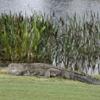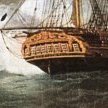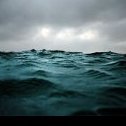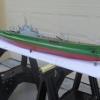
Dee_Dee
-
Posts
290 -
Joined
Reputation Activity
-
 Dee_Dee got a reaction from Venti in Muscongus Bay Lobster Smack by Venti - Model Shipways - 1:24
Dee_Dee got a reaction from Venti in Muscongus Bay Lobster Smack by Venti - Model Shipways - 1:24
Venti,
Chapelle’s book has a full chapter dedicated to the MBLS with lots of great info. A used copy can be purchased for $20, but the older printings has actual photos (vs dot photos).
The book was invaluable during my build. My build was a scratch build using a Midwest kit for patterns, single planked, had a working centerboard and rudder.
The Model Shipway kit is nothing like the original boat. It has a keel / sloop hull with a center board (????) and a shrouded mast. The Midwest kit is a 99% match to the drawing in Chapelle’s book with one exception, the cockpit did not have a raised floor or benches. . The boat had floorboards laid directly on the hull, no benches and the mast is not shrouded.
Here are a few items I had underlined in Chapelle’s book:
--The cockpits were deep and not self-bailing
--The keel structure were much stronger than was necessary
--Most of the boats were ceiled inside with 1” planks the full length as practical
--The gaff was hoisted by a single halyard
--The main sheet horse was extra wide
For phun, here’s a link to a discussion in Woodenboat.com forum, about the two MBLSs that submarined and sank in the 70’s in LIS, that I wrote about in my build log. A confirmation that a farm tractor cannot / should not be souped up to race at Silverstone or Road America. Great info about the hull and sail design.
https://forum.woodenboat.com/forum/designs-plans/149038-?164895-How-a-boat-sinks-Muscongus-Bay-Sloop=
Here’s the drawing from my book of figure 99 on page 267, the drawing fills the page. It gives a good outline of the centerboard trunk and confirms there was no cockpit floor as in the kits. I was the original poster of the hull drawing from Chapelles book that has been circulating for 10+ years, (I watermarked it). Here’s a higher quality print.
Hexnut used this plan and put it into CAD. His build log will bring this drawing to life. Great photos in his build log showing the construction of the MBLS, post #40 shows the dropped floor.
https://modelshipworld.com/topic/981-muscongus-bay-lobster-smack-by-hexnut-midwest-products-124-1st-wooden-ship-build/
-
 Dee_Dee got a reaction from JacquesCousteau in Muscongus Bay Lobster Smack by Venti - Model Shipways - 1:24
Dee_Dee got a reaction from JacquesCousteau in Muscongus Bay Lobster Smack by Venti - Model Shipways - 1:24
Venti,
Chapelle’s book has a full chapter dedicated to the MBLS with lots of great info. A used copy can be purchased for $20, but the older printings has actual photos (vs dot photos).
The book was invaluable during my build. My build was a scratch build using a Midwest kit for patterns, single planked, had a working centerboard and rudder.
The Model Shipway kit is nothing like the original boat. It has a keel / sloop hull with a center board (????) and a shrouded mast. The Midwest kit is a 99% match to the drawing in Chapelle’s book with one exception, the cockpit did not have a raised floor or benches. . The boat had floorboards laid directly on the hull, no benches and the mast is not shrouded.
Here are a few items I had underlined in Chapelle’s book:
--The cockpits were deep and not self-bailing
--The keel structure were much stronger than was necessary
--Most of the boats were ceiled inside with 1” planks the full length as practical
--The gaff was hoisted by a single halyard
--The main sheet horse was extra wide
For phun, here’s a link to a discussion in Woodenboat.com forum, about the two MBLSs that submarined and sank in the 70’s in LIS, that I wrote about in my build log. A confirmation that a farm tractor cannot / should not be souped up to race at Silverstone or Road America. Great info about the hull and sail design.
https://forum.woodenboat.com/forum/designs-plans/149038-?164895-How-a-boat-sinks-Muscongus-Bay-Sloop=
Here’s the drawing from my book of figure 99 on page 267, the drawing fills the page. It gives a good outline of the centerboard trunk and confirms there was no cockpit floor as in the kits. I was the original poster of the hull drawing from Chapelles book that has been circulating for 10+ years, (I watermarked it). Here’s a higher quality print.
Hexnut used this plan and put it into CAD. His build log will bring this drawing to life. Great photos in his build log showing the construction of the MBLS, post #40 shows the dropped floor.
https://modelshipworld.com/topic/981-muscongus-bay-lobster-smack-by-hexnut-midwest-products-124-1st-wooden-ship-build/
-
 Dee_Dee got a reaction from Liam D in Sloup by Dee_Dee - Corel - 1:25 Based on 'Bergere de Domremy / Shepherdess from Domremy
Dee_Dee got a reaction from Liam D in Sloup by Dee_Dee - Corel - 1:25 Based on 'Bergere de Domremy / Shepherdess from Domremy
Markku,
Thanks for stopping by! You did a great job on your Flattie, especially all the little details. Agree, it's interesting to see how work boats change to work the local waters.
Eamonn, JesseLee,
It's always nice to have you stop by. Yep! I managed to add another 'character' mark! You'll get to see it in my next update.
And Thanks to all that hit the 'like' button.
~~~~
I'm finally home after a couple of weeks on the road and plan to get back to the boat yard this week. But that may be delayed by some nice long rides on my bicycle.
I need to add one more plank to get to my next planned build update. So far, I'm happy with how the planking is going. But the last five planks added on each side have been a real challenge! Each plank bends, twists 90* and has significant edge bending in the middle of the plank and also add some edge beveling! It takes a few hours to make and glue each plank. I'm taking my time to make sure each plank fits snug, I don't want to use any filler and single plank the hull.
As I progress in my build, I'll be posting a few more photos of the Bergère de Domrémy. These photos are not being added for 'fluff,' 'log filler' or 'eye candy', rather they are a reference when I make a change (or where I wish I had made a change, such as dropping the height of the cockpit floor 10-12".)
I'd like to share with you more about the boat I'm using as my model guide, the Bergère de Domrémy, (Shepherdess from Domrémy, referring to Joan d'Arc). (See post #2 for more photos.) The Bergère de Domrémy, hull #B5929, is a coquillier, shellfish sloop, built in 1936 at the shipyard M. Auguste Tertu in Le Fret, France, length 37'5", beam 13'. Of the more than 200 boats built, only a few still exist and are used for recreation purposes or as museum boats today. Since 1982, the Association An Test has owned, maintained and operates the Bergère de Domrémy, which is considered a French National Treasure. The boat was overhaulled / rebuilt 1989 - 2002 at the museum shipyard Chantier du Guip in Brest.
The Bergère de Domrémy hull is cleaned frequently, always on a king tide day. The boat is laid over on one side (here port side) and some weights are hung from the mast to stabilize it. Below the water line is cleaned with high pressure water and scrapers.
Any wet spots on the hull are dried with a flame so it can be painted. Weird to see a flame on a wooden boat, but they only have the tide duration to do the job. On the other side, the paint is touched up above the water line. The next day, the boat is laid on its starboard side and cleaning process repeated.
These boats were built to last and were very heavy. Careening (leaning) these boats over was done frequently, to strengthen the hull, the plank that it lays on is ~2" thicker. I'm thinking about adding this detail, it can be done by adding a layer when I'm done planking. These next three photos show this plank.
Ringed Plovers are enjoying some of the mussels that have been scraped from the hull.
I was starved for info and photos on my MBLS, but for this build, there is a lot of information available!
I'll add a build update as soon as I get that plank added.
Thanks for stopping by!
Dee Dee
-
 Dee_Dee got a reaction from robert952 in Preparing kit sails
Dee_Dee got a reaction from robert952 in Preparing kit sails
This is the basic fabric prep I do. It takes just a few minutes and well worth the time.
Wash sail cloth in warm water with plain soap, rinse in hot water and repeat. This will remove most of the starch applied at the mills when the fabric is bolted and applied each time the fabric is re-bolted. Lay fabric on flat surface, don’t stretch or pull and allow to dry. When fabric is dry, check the fabric weave, it should be straight, not wonky. If it’s wonky, it will be impossible to fix / straighten and your sails will be wonky. Purchase new fabric.
Steam press fabric. Do not use starch or any other spray, it all flakes and catches dust. (Pressing is different than ironing). If you don’t have a steam iron, spray the dry fabric with water.
Proper pattern layout will improve your sails appearance, will it look like a sail or a potato sack?
If sail is raised, layout the sail pattern with the leach sail side laid on the fabric grain, this will give the fabric optimum strength.
If sail is lowered / dropped / furled, layout the sail pattern with mast edge laid on the fabric grain, the bias will allow the fabric to fold naturally.
If this is all you do, your sails will look great. Your steam iron is your best friend!
Phun Stuff
FWIW, the very best spray lacquer is ‘Hair Lacquer’.
This is the stuff used in theater / movies for an extreme hair updo – Think Audrey Hepburn as Eliza Doolittle in My Fair Lady walking into the Royal Ball, or as Holly Golightly in Breakfast at Tiffany’s wearing the tiara.
Hair lacquer is only available at specialty stores or on-line and it’s EXPENSIVE, $40 - $50 a can. Hair lacquer produces a finer spray, better quality than the spray lacquer from the local hardware store. Practice spraying hair lacquer before applying to sail on both sides. Spray 1 – 2 light coats.
HAIR LACQUER IS NOT HAIRSPRAY – PLEASE, DO NOT USE HAIRSPRAY! 😊
-
 Dee_Dee reacted to alde in Glad Tidings by alde - Model Shipways - 1:24 - pinky schooner
Dee_Dee reacted to alde in Glad Tidings by alde - Model Shipways - 1:24 - pinky schooner
It's sure been a long time since I posted on this build. After my wife had her stroke, it was the last thing on my mind. I'm getting ready to pick it back up. In all this time I've lost some parts and 2 sheets of the plans. The nice folks at Model Expo replacement them with no questions asked. The hull fell off a pretty high shelf and has some damage that needs to be fixed. Since it will need a re-paint I'll take to opportunity to go with the yellow hull. It will be a good model to get my mojo back and get my mind occupied with something positive. I'll start posting regularly as soon as I get it on the bench.
I have an Armed Virginia Sloop kit to build next and then Chucks beautiful Cheerful kit. If all goes well I might get started on the Winchelsea next year. I'll have to see if I feel like my skills are up to it. I'm so glad to be in a position to get back at it and be among friends here on the forum. I see we have lost a couple of good people since I was a regular and that really saddens me. They were good people always with a kind word and willingness to help.
-
 Dee_Dee got a reaction from BETAQDAVE in The Kit-Basher's Guide To The Galaxy
Dee_Dee got a reaction from BETAQDAVE in The Kit-Basher's Guide To The Galaxy
WOOD COFFEE STIR STICKS
These come in 5.5" and 7.5" and are 1/16" thick. You can get some at your local coffee shop, or purchase a few thousand on eBay for less than $20.
These are made of birch, very pliable and hold a corner very well.
When I build my 18th century long boat, I will replace the basswood planking with coffee stir sticks.
-
 Dee_Dee got a reaction from gulfmedic1 in The Kit-Basher's Guide To The Galaxy
Dee_Dee got a reaction from gulfmedic1 in The Kit-Basher's Guide To The Galaxy
WOOD COFFEE STIR STICKS
These come in 5.5" and 7.5" and are 1/16" thick. You can get some at your local coffee shop, or purchase a few thousand on eBay for less than $20.
These are made of birch, very pliable and hold a corner very well.
When I build my 18th century long boat, I will replace the basswood planking with coffee stir sticks.
-
 Dee_Dee got a reaction from shipman in A method for making panelled sails using paper
Dee_Dee got a reaction from shipman in A method for making panelled sails using paper
Cat,
Very nice sails.
For sewing on the bolt rope, I would like to make two product suggestions.
I totally understand why your using the needle threader instead of a needle. There are needles with fine / small eyes, but threading them is a real pain. For the needle, I would like to suggest using "Beadalon Collapsible Eye Needles". The eyes collapse to the same size as the needle. These come in multiple sizes and should be faster to sew with.
These are readily available, this link is to confirm the exact product.
https://www.michaels.com/beadalon-fine-collapsible-eye-needles/M10427044.html
There are other 'collapsible eye' needles, but I find these best for actual sewing.
For the thread, Nymo is a beading thread that is a single ply and very fine. It's a nylon fiber and very strong. What's nice about this thread, it does not fray (untwist) very easily and if it does, nearly impossible to see.
This needle and thread combination would allow sewing 'thru' the bolt rope instead of around it.
Nymo Thread
Size Thickness
OO ?
O 0.15mm / 0.006 in
B 0.20mm / 0.008 in
D 0.30mm / 0.012 in
F 0.35mm / 0.014 in
This link will provide info on available colors
https://www.firemountaingems.com/search?keywords=nymo+thread
.
-
 Dee_Dee got a reaction from mtaylor in A method for making panelled sails using paper
Dee_Dee got a reaction from mtaylor in A method for making panelled sails using paper
Cat,
Very nice sails.
For sewing on the bolt rope, I would like to make two product suggestions.
I totally understand why your using the needle threader instead of a needle. There are needles with fine / small eyes, but threading them is a real pain. For the needle, I would like to suggest using "Beadalon Collapsible Eye Needles". The eyes collapse to the same size as the needle. These come in multiple sizes and should be faster to sew with.
These are readily available, this link is to confirm the exact product.
https://www.michaels.com/beadalon-fine-collapsible-eye-needles/M10427044.html
There are other 'collapsible eye' needles, but I find these best for actual sewing.
For the thread, Nymo is a beading thread that is a single ply and very fine. It's a nylon fiber and very strong. What's nice about this thread, it does not fray (untwist) very easily and if it does, nearly impossible to see.
This needle and thread combination would allow sewing 'thru' the bolt rope instead of around it.
Nymo Thread
Size Thickness
OO ?
O 0.15mm / 0.006 in
B 0.20mm / 0.008 in
D 0.30mm / 0.012 in
F 0.35mm / 0.014 in
This link will provide info on available colors
https://www.firemountaingems.com/search?keywords=nymo+thread
.
-
 Dee_Dee got a reaction from VTHokiEE in Glad Tidings by Dee_Dee & Glacial Boat Works - Model Shipways - 1:25
Dee_Dee got a reaction from VTHokiEE in Glad Tidings by Dee_Dee & Glacial Boat Works - Model Shipways - 1:25
The decking is done!
To get a level decking, I did a lot of scraping with a razor blade, some light sanding with some sandpaper and a sanding sponge. Then finished up with vacuuming! I wiped on a thin coat of shellac to act as a sealer, it's easy to scrape off where needed. The black lines are reference lines for the cabin placement. I'll glue on a 'cleat' to help align the cabin.
These are the cabin footprints - Ooops! The forward cabin should be flipped 180*
I'm disappointed with the lumber in the kit - Almost every piece had significant saw blade marks that had to be sanded down to get a tight fit. I coated the edges with some shellac before sanding and sanded just enough to get a flat edge. The kit was designed to use 12 planks on each side, covering just under 60mm. However, since each strip had to be sanded, 12 planks left me with a 2mm gap on both sides.
I did some creative press fitting to fill the gap.
I still need to figure out the personality and color scheme. I've decided to not use the round portholes, instead, I'll make rectangle shaped windows and skylights. I really like what John Earl did with his pinky, check out John's pinky here and here.
Thanks for stopping by.
Dee Dee
-
 Dee_Dee got a reaction from EricWilliamMarshall in Gutermann Polyester thread for making rope.
Dee_Dee got a reaction from EricWilliamMarshall in Gutermann Polyester thread for making rope.
Chuck,
There's a fabric glue that has not been previously discussed on MSW, called "Beacon Fabri-Tac" It's used by the fashion industry, applications include costume design and gluing sequins to wedding gowns.
I've experimented with it and I'm really happy with the results: It's quick drying, doesn't stain / discolor or spread like CA glue does. When it cures, there is a very slight amount of stiffening, but the fabric remains fully flexible.
A plus feature of this glue, it's acid free.
It comes in 2 oz, 4 oz and 8 oz bottles and mini tubes.
I purchased it at JoAnne Fabrics or it can be mail ordered.
https://www.beaconadhesives.com/product/fabri-tac/
Dee Dee
-
 Dee_Dee got a reaction from thibaultron in Adding numbers to yacht sails
Dee_Dee got a reaction from thibaultron in Adding numbers to yacht sails
There are all sorts of ways to do this, but the least complicated is using better quality wax colored pencil, like Prismacolor, Staedtler, or Blick Store brand - these can be purchased individually. Cheap colored pencils have poor color pigment, icky wax and will not give the desired results.
Simple How To:
Using a very sharp colored pencil, lightly trace / outline the number, then, with a light touch fill in the outline GOING WITH THE FABRIC GRAIN. Hold the fabric taught with you other hand, to keep it from stretching / pulling.
Wait 30-60 seconds, then add a second light layer of color pencil.
Next is burnishing - place a 2" x 2" piece of paper over the color and lightly burnish in the color, 6-8 passes. Use paper heavier than copy paper and don't let the paper slide! The end of a medium size Sharpie works great for burnishing.
Add two more layers of color pencil and burnish again. Repeat until you get the desired opacity.
Colored pencils are a great way to add 'aging' and details to fabric sails, build depth by using color variations.
Practice on the same fabric to be sure the colored wax does not get pushed thru the fabric.
There is no real need to 'seal' the color pencil (unless you plan on washing your sails) and the wax will keep the pigment from fading.
I've used colored pencils to add detail to art quilts - 20 years later, the detail is still there!
.
-
 Dee_Dee got a reaction from allanyed in Adding numbers to yacht sails
Dee_Dee got a reaction from allanyed in Adding numbers to yacht sails
There are all sorts of ways to do this, but the least complicated is using better quality wax colored pencil, like Prismacolor, Staedtler, or Blick Store brand - these can be purchased individually. Cheap colored pencils have poor color pigment, icky wax and will not give the desired results.
Simple How To:
Using a very sharp colored pencil, lightly trace / outline the number, then, with a light touch fill in the outline GOING WITH THE FABRIC GRAIN. Hold the fabric taught with you other hand, to keep it from stretching / pulling.
Wait 30-60 seconds, then add a second light layer of color pencil.
Next is burnishing - place a 2" x 2" piece of paper over the color and lightly burnish in the color, 6-8 passes. Use paper heavier than copy paper and don't let the paper slide! The end of a medium size Sharpie works great for burnishing.
Add two more layers of color pencil and burnish again. Repeat until you get the desired opacity.
Colored pencils are a great way to add 'aging' and details to fabric sails, build depth by using color variations.
Practice on the same fabric to be sure the colored wax does not get pushed thru the fabric.
There is no real need to 'seal' the color pencil (unless you plan on washing your sails) and the wax will keep the pigment from fading.
I've used colored pencils to add detail to art quilts - 20 years later, the detail is still there!
.
-
 Dee_Dee got a reaction from mtaylor in Adding numbers to yacht sails
Dee_Dee got a reaction from mtaylor in Adding numbers to yacht sails
There are all sorts of ways to do this, but the least complicated is using better quality wax colored pencil, like Prismacolor, Staedtler, or Blick Store brand - these can be purchased individually. Cheap colored pencils have poor color pigment, icky wax and will not give the desired results.
Simple How To:
Using a very sharp colored pencil, lightly trace / outline the number, then, with a light touch fill in the outline GOING WITH THE FABRIC GRAIN. Hold the fabric taught with you other hand, to keep it from stretching / pulling.
Wait 30-60 seconds, then add a second light layer of color pencil.
Next is burnishing - place a 2" x 2" piece of paper over the color and lightly burnish in the color, 6-8 passes. Use paper heavier than copy paper and don't let the paper slide! The end of a medium size Sharpie works great for burnishing.
Add two more layers of color pencil and burnish again. Repeat until you get the desired opacity.
Colored pencils are a great way to add 'aging' and details to fabric sails, build depth by using color variations.
Practice on the same fabric to be sure the colored wax does not get pushed thru the fabric.
There is no real need to 'seal' the color pencil (unless you plan on washing your sails) and the wax will keep the pigment from fading.
I've used colored pencils to add detail to art quilts - 20 years later, the detail is still there!
.
-
 Dee_Dee got a reaction from michael mott in Gutermann Polyester thread for making rope.
Dee_Dee got a reaction from michael mott in Gutermann Polyester thread for making rope.
Chuck,
There's a fabric glue that has not been previously discussed on MSW, called "Beacon Fabri-Tac" It's used by the fashion industry, applications include costume design and gluing sequins to wedding gowns.
I've experimented with it and I'm really happy with the results: It's quick drying, doesn't stain / discolor or spread like CA glue does. When it cures, there is a very slight amount of stiffening, but the fabric remains fully flexible.
A plus feature of this glue, it's acid free.
It comes in 2 oz, 4 oz and 8 oz bottles and mini tubes.
I purchased it at JoAnne Fabrics or it can be mail ordered.
https://www.beaconadhesives.com/product/fabri-tac/
Dee Dee
-
 Dee_Dee got a reaction from Marcus.K. in The Kit-Basher's Guide To The Galaxy
Dee_Dee got a reaction from Marcus.K. in The Kit-Basher's Guide To The Galaxy
WOOD COFFEE STIR STICKS
These come in 5.5" and 7.5" and are 1/16" thick. You can get some at your local coffee shop, or purchase a few thousand on eBay for less than $20.
These are made of birch, very pliable and hold a corner very well.
When I build my 18th century long boat, I will replace the basswood planking with coffee stir sticks.
-
 Dee_Dee got a reaction from Rach10199 in The Kit-Basher's Guide To The Galaxy
Dee_Dee got a reaction from Rach10199 in The Kit-Basher's Guide To The Galaxy
WOOD COFFEE STIR STICKS
These come in 5.5" and 7.5" and are 1/16" thick. You can get some at your local coffee shop, or purchase a few thousand on eBay for less than $20.
These are made of birch, very pliable and hold a corner very well.
When I build my 18th century long boat, I will replace the basswood planking with coffee stir sticks.
-
 Dee_Dee got a reaction from popeye the sailor in Pen Duick by hof00 - FINISHED - Artesania Latina - 1/28
Dee_Dee got a reaction from popeye the sailor in Pen Duick by hof00 - FINISHED - Artesania Latina - 1/28
At 1:50, the boat that is sailing in front of and to the left has a hull number B5929, which is the Bergère de Domrémy. This is the boat that I based my Corel Sloup build on!
-
 Dee_Dee reacted to JesseLee in Syren by JesseLee - FINISHED - Model Shipways - scale: 1:64
Dee_Dee reacted to JesseLee in Syren by JesseLee - FINISHED - Model Shipways - scale: 1:64
I finally got the flags on. I guess this means this build is finished. I would like to build a lifeboat to hang on the back but who knows when I'll ever get around to that. Maybe that could be a mini-build some time in the future.
Now I have to get my Lyme damaged brain to remember how to get this labeled as "Finished"
Jesse
-
 Dee_Dee got a reaction from GrandpaPhil in Muscongus Bay Lobster Smack by Dee_Dee - FINISHED - Midwest Products – 1:24 – Kit Bashed - Small
Dee_Dee got a reaction from GrandpaPhil in Muscongus Bay Lobster Smack by Dee_Dee - FINISHED - Midwest Products – 1:24 – Kit Bashed - Small
I’M FINALLY DONE! YIPPEE! DOING THE HAPPY DANCE!!!
Well, almost done. I still need to add the trail boards – more on that later. I also still need to make the sails, but that will be in a separate post.
I think this has to be one of the slowest builds ever! EIGHT (8) months to build a model that I could have finished sooner, but I decided to take my time, enjoy and learn.
I took these photos a few days ago when we had good sunlight. It was clouds and rain today and the same is forecasted for the next 5+ days. These photos are missing three rope coils which were added today. When the weather gets better, I’ll add a few more photos with the rope coils and the cockpit floor boards.
The following 'details' are to help other Newbies.
GEORGE WASHINGTON FITTINGS
I made numerous fittings with the help of George Washington, more commonly known as a one dollar bill. I cut thin strips from a one dollar bill to make the mast hoops and iron rings on the mast, boom and gaff.
Through trial and error I found that a lightly worn dollar bill works best, as the CA glue is able to permeate the paper better. I used a permanent black marker on the paper BEFORE cutting and gluing. The ink / paint will quickly wear off if applied after gluing.
So far, the mast hoops and iron bands cost about $0.68.
MAST HOOPS
I made the mast using a full width strip of George x 2.5 – 3.0mm high. After saturating the hoops in CA glue, I let them cure for a couple of days, and then sanded them down to a thickness between 1.47 and 1.59mm, or about 1.75” in life size. I started with 14 mast hoops and ended up with 13.
I made the mast hoops for my Phantom this same way and sanded these down to an average thickness of 0.8mm (one mast hoop is 0.57mm.)
MAST / BOOM IRON BANDS
The paper for these bands needs to be cut to exact finished width since they cannot be sanded down to thickness. For this scale, two wraps did the job and left enough paper / iron to sand smooth the edge. After sanding, I touched up the raw edges of paper and then strengthened with a dab of CA glue.
MAST
I replaced the kit 7mm mast with a walnut mast and added lots of details. I added three iron bands under each block. These also work great to camouflage a wayward drilling. I also added a shoulder rest for the boom and a mast coat, both were made from layered walnut strips. The drilling for the cleats got really skewered, oh well!
TRAVELER
I added the traveler early on and that was an ‘oops’ waiting to happen and it got squished. I pulled that one out and made a new traveler from heavier brass rod. To keep it from getting squished again, I slid a 1/16” spacer under it.
BOOM
To improve how the boom was connected to the mast, I added a yoke to the boom that will rest on the shoulder I added to the mast. I also added two iron bands.
GAFF
I added an iron band for the block. The blue prints show one block placed at the base of the gaff, this should have been moved out approximately 1/8” to get a better ‘line’ with the rigging.
PARRELL BEADS
A vial of #11 seed beads will last you a lifetime of building and still have enough left over for a couple of friendship bracelets.
Instead of using black beads, I chose a multicolor bead in a muted purple color. These beads have flecks of gray and tan that give them a weathered look. They blend in really well.
BLOCKS
After lots of experimenting, I came up with a simplified method. While not technically correct, they look great! All knots were secured with CA glue applied on the tip of a pin.
RIGGING
The kit supplied rope was replaced with Griffin Silk beading cord, in size 1, 3 and 6. This stuff is great and looks a thousand times better than the kit rope.
I used a specialty thread in size 0 to secure the boom and gaff until I add the sails. This thread measures 0.07mm and is extremely strong!
Here are some photos, when we are done with the rain, I’ll add a couple more photos that include all rope coils and the floor boards.
Questions, thoughts, comments, suggestions are greatly appreciated,
I've started my next build, Bluenose 1:100, but that is on hold until I clean out the boat yard from top to bottom.
(Edited 11/29/2014 to add photos back)
(Edited 4/9/15 to add photos back)
-
 Dee_Dee reacted to EdT in Young America 1853 by EdT - FINISHED - extreme clipper
Dee_Dee reacted to EdT in Young America 1853 by EdT - FINISHED - extreme clipper
Young America - extreme clipper 1853
Part 323 – Wrapping Up
Finally, 99.999% means complete. Since the last post it has been a lot of little chores: snipping rope ends, the last few rope coils, touching up with paint, waxing standing rigging lines, clean up, etc. Some of the "major" chores are described below.
The first picture shows the final disposition of the crojack sheets and tacks. These were simply allowed to hang free from the clue garnet blocks with their full lengths coiled on deck. They were tied down to one of the beams under the pile of rope coils to keep them vertical and straight..
The main braces could finally be run, since access was no longer needed to the deck area between the main and mizzen masts. The next picture shows the starboard brace pendant shackled to the outer boomkin eye.
The fall of the brace runs from the yard pendant through the lead block on the rail in the center of the picture, then to a deck cleat. The other blocks on the boomkin are the upper and lower main topsail braces. Two missing eyebolts still need to be fitted on the rail. The picture also shows the completion of another chore left over from the volume II work, fitting chains to support the boomkins. The next picture shows both of these.
The next picture shows the starboard swinging boom, the lower studding sail boom, being lashed to the fore channel brackets.
The alternative would be to store these on the skid beams over the cabin, but this seemed more appropriate, since in port these were often used to moor ships' boats.
The next picture shows the model with the dust case removed in the relatively cleaned-up workshop.
Finally, launch.
Please excuse the amateur artwork. Couldn't resist.
Ed
-
 Dee_Dee got a reaction from Piet in Red Dragon by Vivian Galad - Artesania Latina - 1:60 - modified
Dee_Dee got a reaction from Piet in Red Dragon by Vivian Galad - Artesania Latina - 1:60 - modified
Vivian!
Congratulations to you and your lovely bride on your wedding! May your journey in life together be blessed every day!
Your sails are looking fabulous. Looking forward to seeing them added to your Red Dragon.
Dee Dee
-
 Dee_Dee reacted to popeye the sailor in Red Dragon by Vivian Galad - Artesania Latina - 1:60 - modified
Dee_Dee reacted to popeye the sailor in Red Dragon by Vivian Galad - Artesania Latina - 1:60 - modified
looks very nice Vivian........must be some elaborate rigging for the braces {steering}.
-
 Dee_Dee reacted to Vivian Galad in Red Dragon by Vivian Galad - Artesania Latina - 1:60 - modified
Dee_Dee reacted to Vivian Galad in Red Dragon by Vivian Galad - Artesania Latina - 1:60 - modified
And here are some pictures. First one to see how It would be like. Test the blocks and such, since I intended to let the sails a bit functional.
I researched through some papers I found and the rigging seems to be too close to the kit's instructions, so I decided to go along with them.
Second one with the sail on it's place. Ropes are still loose till I find a way to set them as I want - won't use the instructions for that.
Third one details the ropes that pin the sail to the mast. That part was a little bit challenging as the thread was already sewed to the sail.
Next post I'll show the sail in place, just waiting for the other 2 to be rigged.
-
 Dee_Dee reacted to Vivian Galad in Red Dragon by Vivian Galad - Artesania Latina - 1:60 - modified
Dee_Dee reacted to Vivian Galad in Red Dragon by Vivian Galad - Artesania Latina - 1:60 - modified
My many thanks, Dee Dee! You helped me a lot and I will always be thankful for your gift. I've already rigged the main mast's sail. 😄







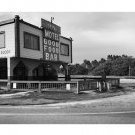
.thumb.jpeg.fc5d633a7b34428fcf19419a73d56d55.jpeg)

